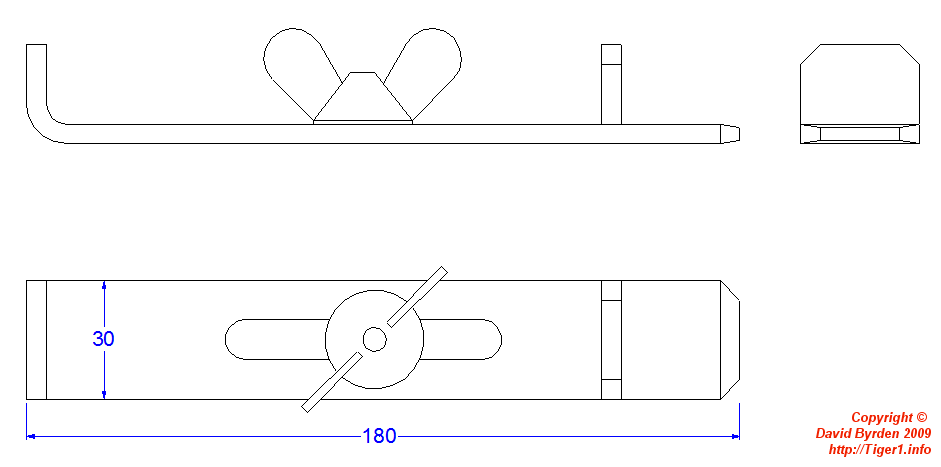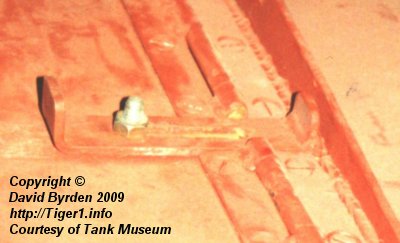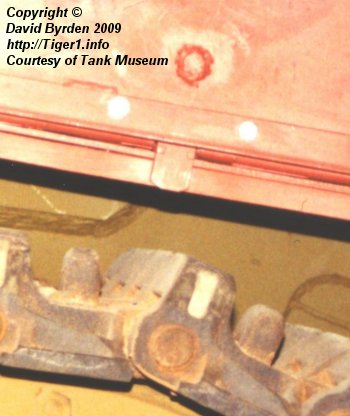About this detail of the Tiger
The original set of mud flaps designed for the Tiger were inadequate, since they did not cover the extension of the track beyond the hull side. Side fenders were added to the tank at about the 30th hull, along with a new design for the mudflaps [1, see 3.4.1.3] . These new mudflaps were present on hull #250031 which survives today. They remained unchanged for the rest of the Tiger's production run.

The new mudflaps were in 2 parts, one extending only to the edge of the hull and another folding part to cover the wide tracks. The folding parts could be locked into place with a sliding bar, shown here. This bar was identical on both the front and rear mudflaps.

The bar was held in place with a wingnut. This could be loosened without the use of tools, allowing the bar to slide left and right thanks to its central slot. When slid into a bracket on the main part of the mudflap, it locked the folding part into the horizontal position. This photo shows the left-hand rear mudflap of the Tiger at Bovington, during restoration. (The original wingnut has been lost).

When the bar was slid all the way out, the folding part of the mudflap could be raised. The bar could then be slid down into the gap at the hinges, as shown in this photo of a front right-hand mudflap. Thanks to the small tab welded near the end of the bar, it would hold the folded part vertical.
[1] DW to Tiger 1
[2] Survey of Tiger 250122, at Bovington museum, by David Byrden